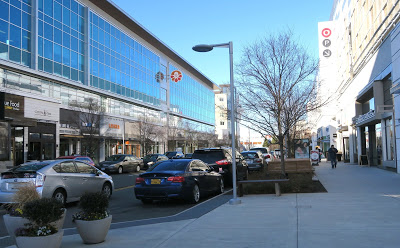Public invited to meeting on urban design guidelines
 |
| Design guidelines address outdoor features, such as the wide sidewalks, benches, planters, streetlights, building facades, and signage in the Mosaic District. |
The Fairfax County Office of Community Revitalization (OCR) is revising the urban design guidelines for areas designated as revitalization districts, such as Annandale and Bailey’s Crossroads/Seven Corners.
The public is invited to learn more about the guidelines and present their views at a community meeting Thursday, July 26, 7-8 p.m., at George Mason Regional Library.
The urban design guidelines “provide a common vocabulary to promote discussion about streetscapes, public spaces, and overall development plans,” states a notice about the meeting from JoAnne Fiebe, revitalization program manager in the OCR.
The guidelines offer visual images of design elements such as building facades, landscaping, urban parks, and streetlights.
They would be used by developers proposing new projects and by citizens, Fairfax County staff, the Planning Commission, and the Board of Supervisors when they review development proposals.
Volume 1 of the updated design guidelines covers best practices for the design of streetscapes, parks, landscaping, parking, and exterior building features that apply holistically to all commercial revitalization districts (CRDs) and commercial revitalization areas (CRAs). Volume 1 is expected to be completed and presented to the the Board of Supervisors for approval this fall.
Volume 2, addressing specific, customized guidelines for each CRD and CRA, would be completed in 2019.
For Annandale, there would be just minor updates and reformatting in Volume 2. That’s because the urban design guidelines for Annandale are newer than those for most other areas.
The urban design guidelines for Bailey’s Crossroads and Seven Corners, to be presented to the BoS this fall, contain more comprehensive changes. They include written and visual ideas for the design of each street in the CRD, open space features, lighting, furnishings, and “how innovative sustainable design practices can be used to foster a unique sense of place.”

